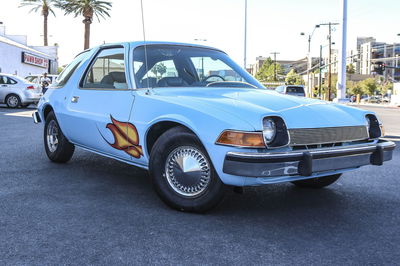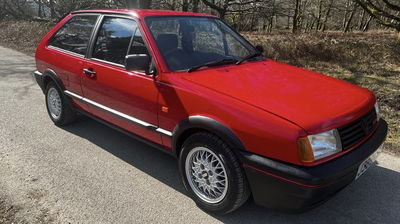What Do Supercharger Capacity Ratings Actually Mean?

The world has gone forced-induction crazy in the past few years. Dominated by the turbocharger, the entity of the supercharger has really struggled to keep up with the advances in technology and efficiency of the exhaust-driven turbine. On the contrary, they’re still embedded in American auto culture and therefore are still clinging on in this emissions and efficiency-obsessed world.
But one aspect of superchargers that seems to sneak under the radar is their capacity or displacement rating. Normally only specced using boost figures, what does the actual volume of supercharger mean?

As you may know, there are two main types of supercharger; centrifugal and positive displacement. In simple terms, a centrifugal supercharger is effectively a belt-driven turbocharger, resembling a turbine that is spooled up using the rotation of the belt connected to the crankshaft.
The power delivery is non-linear due to the air being compressed by the centrifugal force of the compressor wheel which reaches speeds of tens of thousands of rpm. The connection to the crankshaft via the belt means that maximum boost must occur at redline, with the compressed airflow rate building exponentially as engine speed rises.

Alternatively, positive displacement superchargers work in an entirely linear fashion - e.g. boost at 3000rpm is doubled when the engine reaches 6000rpm. Personified generally through the root and twin-screw supercharger, positive displacement units are precisely the sort that sit on top of all those brutal supercharged V8s continued these days through Jaguar, Ford, Dodge and General Motors.

In terms of sizing, it all comes down to the volume of air that the supercharger can cram into the cylinders of the engine each time the supercharger spins around. The ratings for superchargers are therefore given in L/rev (litres per revolution) or cc/rev (cubic inches per revolution). So taking Hennessey’s 800bhp GT350 Mustang as an example, its ‘2.9-litre’ supercharger is referred to thusly because it can force 2900cc of air in one end and out the other each time it performs a full 360-degree rotation.
This rating system isn’t an exact science however. As described before, the amount of boost pressure and therefore compressed air that these devices can displace all comes down to what form of supercharger is being used. While a twin-screw supercharger will generally keep to its rating with the constant boost it produces, a centrifugal supercharger will only meet its ultimate flow rate once it reaches its maximum boost at higher engine speeds.

The largest superchargers applicable for cars come in at around 8L/rev, which is an absolutely monstrous amount of air to be chucking around. Only to be used on engine blocks that are built to handle well over 1000bhp, superchargers of this size give power gains upwards of 300bhp.
It probably won’t be too long until the supercharger is officially dead in production cars, especially when the US decide to catch up with the rest of the world’s turbocharging craze. Even supercharging stalwarts Jaguar is expected to switch to turbocharged units based on its Ingenium architecture in the near future.
Do you hope the supercharger whine is still heard at car meets well into the future or do you think giving in to turbocharging is the logical and inevitable progression for the car? Comment below with your thoughts!














Comments
#superchargerlivesmatter
#AllForcedInductionMatter
These kind of articles are so damn interesting
You think that last supercharger is as big as it gets? I think I recall one a tad bigger…
What engine has been fitted to that super charger
Surely by that point you’d just think to turbo it, or quad turbos
Do you want some engine with that supercharger
Train supercharger kicked in yo!
but
Read up dude … Its all about the pulley size.
Size matters
“The supercharger is dying!”
Meanwhile, in 2016-17 we have more production supercharged vehicles than we’ve had in a long time.
Oh and let’s not forget that Audi is working on making an electric supercharger become a reality.
They call it an “electric turbocharger”, but hey, they also put an 3.0T badge on a supercharged S5.
“especially when the US decide to catch up with the rest of the world’s turbocharging craze”
no lag> more horsepower
Thats why twin turbos are used. Small turbo which spools up rapid so there is no lag and then the big turbo kicks in.
No lag and more hp and more efficiency
cc are cubic centrimetres.
REMOVE IMPERIAL SYSTEM remove imperial system
yuo are worst units. yuo are america smell stink f s. rereme,ber 1791 academmey of sci(ence.s. take bath in dead inch…AHAHA. WE DO NOT FORGETe!!!! james clerk maxwell makings fast rap album of metric system,: JAMES CLERK MAXWELL ALIVE IN EUROPE. REMOVE IMPERIAL SYSTEM FROM THE SCIENCES
Come again?
This is a pretty clever remove kebab joke, don’t know why you got downvoted
For me super charged cars with inline engines are the best.
Guys a question… a car is fitted with a supercharger, with this much amount of air pushed into the cylinders and imagining it’s on stock ecu, will it be able to know how much fuel to inject? And is there a limit on the amount of fuel that the stock ecu can inject? Also is there a need to change the injectors as well to allow flow of this much fuel? I am just curious!
It all depends on how you build your conversion but as a general rule there wouldn’t be enough fuel being injected if you do nothing other than adding boost to the engine.
Stand alone ECUs are generally used for custom builds, look at “mega squirt” for example.
For slight increases in boost the standard fuel injectors and pump may be able to keep up but it’s often the case that much of the engine hardware including injectors etc will need upgrading to cope with the higher levels of performance.
There are endless answers to that very vague question!
It depends on the car manufacturer, some ECUs will detect slightly increased air flow and retune themselves to +/-10 HP that is very minor modifications, but belting a super charger to any engine it would definitely send it to a fail safe mode and lock itself causing more loss than gain, so the simple answer is No, the stock ECU will not detect increased air flow from the supercharge. Stock injectors (again depending on the car manufacturer) will usually tolerate increased demand of fuel (ECU should tell it) and will probably be just fine with increased boost (100-150hp) some might even take higher unless and ofcourse you go for massive power gains and bottle neck would be your injectors which usually a tuner will tell you that while tuning your ECU, so the simple answer to that is yes, slight increased Hp would not need new injectors.
Is this big enough?
Pagination